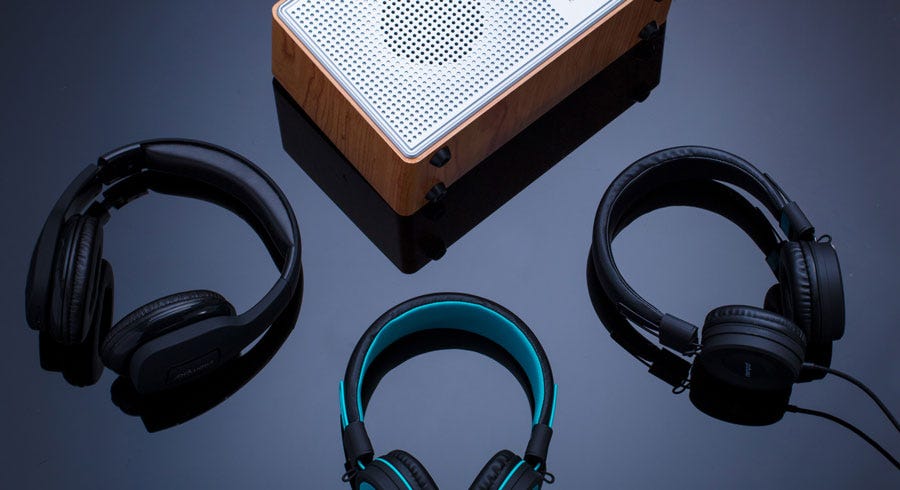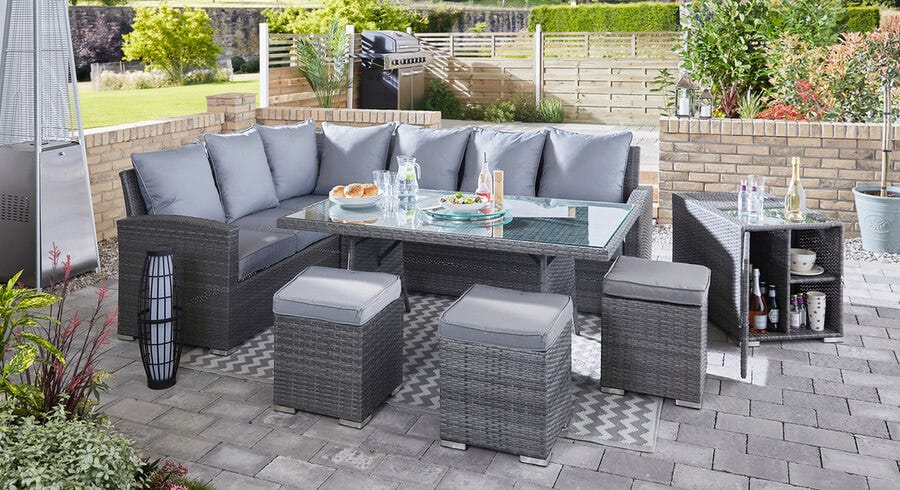Headphones Buying Guide


Wherever you are; a plane or a train, the gym or the beach, a good pair of headphones can make a day, an activity, or a journey fly by. Which makes having the right ones essential to your audio-based happiness. But what type of headphones should you go for?
Types of headphones
The two types are earphones and headphones.
Earphones: These are the most common variety, mainly because they are relatively inexpensive. The two main types are in-ear versions that fit into your ear canal or earbuds that include small drivers that sit on the ridge of your outer ear.
Headphones: The other variety is over-ear headphones, or “around-ear”. These feature cushioned earcups that enclose the ears, whereas on-ear headphones have cushions that sit on the outer ear.
Which type would best suit your lifestyle?
Consider what you are mostly going to use your headphones for and this will narrow down which type you need.
Sports: If listening to music is going to be the mainstay of your new headphones, you’ll want something lightweight in or on-ear that stays put no matter how rigorous your movement gets. Consider pairs that are made from water-resistant materials, so they won’t be damaged by sweat or rain. A wireless option is also good in this instance as you’ll be able to move freely with no worries of wires getting in the way of your workout.
Travel: Portability is key here as you’ll want something that will easily fit in your bag or pocket. But of equal importance is the noise-cancelling or the sound-isolating element, so you can listen without distraction wherever you are.
For kids: Kids headphones usually feature colourful characters they know and love and are made to withstand inevitable drops. They’ll also be appropriately sized for children and some of them will include volume-limiting circuitry, so your young one keeps the volume at safer levels.
Your headphones options
You have a good amount of variety, so here’s a breakdown of all your headphone choices:
Wireless
Bluetooth enabled and available for both over, on, and in-ear, these are useful for sports or outdoor uses like hiking or cycling, while avoiding the tangle of wires on the move. Connect them easily to your device via bluetooth and away you go. Some will also include a noise-cancelling feature, but be mindful of battery life when you are narrowing down your options.
True Wireless
They may claim to be wireless, but the earbud version of most wireless headphones have a wire that connects the right and left earbuds. That’s where true wireless headphones come in, as they come in pairs of separate units for each of your ears. They’ll either come as in-ear varieties that stay in place by resting in your ear canal, or will wrap around the back of your ear. Like the wireless versions, you’ll want to keep the battery life in mind when shopping for these, so you don’t find yourself with no entertainment, mid-workout or journey. But bear in mind, true wireless headphones include a handy carry case that will charge as they are stored, making charging on the move a breeze.
Wired headphones
Connect to any device using the headphones wire and you’re good to go with excellent sound quality. No batteries or charging is required, so these are the perfect option if you are the forgetful type, and cutting your entertainment short isn't an option.
In-ear monitors and earbuds
Sports headphones usually come in and in-ear monitor design, as they fit perfectly inside your ear canal and most of them include foam or rubber tips in a variety of sizes to fit different ears. At the higher end, these can be customised to be precisely molded to fit your ear canals and their sound quality can compete with larger headphones. Professional/higher-end or not, the fact that they fit so snugly inside your ear canal means they provide excellent passive noise isolation.
Earbuds are perhaps the most common type of headphones, partly because they are usually packaged with many portable music devices and smartphones. They include a driver that rests on the ridge of your outer ear and subsequently provide lesser fidelity and isolation than other types of headphones. They are an inexpensive option however and even an upgrade to a higher-quality earbud or in-ear monitor can be easy on the bank balance.
Over-ear
These also go by “full-size” or “around-ear” and have cushioned ear cups that enclose your ears. Because of this they are usually seen as offering the best sound quality and excel at blocking out outside noises or “passive noise reduction” as the feature is often referred to.
On-ear
Similar look to the over-ear, but the cushions rest on the outer ear instead of enclosing it. Sound quality is good, but the design means less bass response than the over-ear models. Bear in mind that with on-ear headphones, you’ll still be able to hear outside sounds, and anyone closeby might be able to hear what you’re listening to.
Open-ear
Designed with a wraparound headband that sits comfortably just outside your ear, usually on your cheekbone. Unlike any of the other headphone designs described, these skip your eardrum and send the sound directly to your inner ear through vibrations in the bones in your head. The technology means that you can still enjoy your music, podcast, or audio book, while hearing sounds around you. Perfect if your activity is near busy roads. Some of these are designed for underwater, so that you can even tune-in whilst swimming.
The right fit for you
Your ideal pair of headphones will come down to what you plan to use them for. If you’re more active, you might want to do away with wires for the freedom of movement that true wireless allows, whereas if you know you’ll be using them for more sedentary positions, wired may be your best option. Keep this in mind when shopping for your next pair of headphones for your ideal audio experience.










